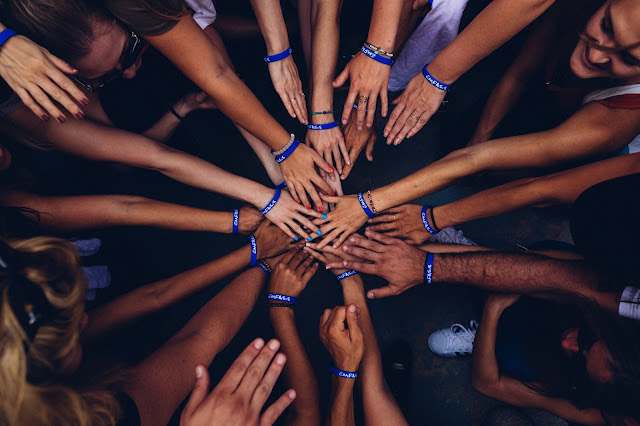What is a disability? How is technology and government initiatives helping to uplift the status of specially-abled in India? How can an individual improve the life of a specially-abled?
Types of disability
Let's look at the following types of disability.
- Vision impairment: Vision impairment is when a person has lost his complete sense of sight or retain some of it. He could either see partially or could not see at all.
- Hearing impairment: just like vision impairment hearing impairment could be mild or profound. This means a person could hear something in mild hearing impairment while nothing can be heard in profound hearing impairment.
- Mental health illness: Mental health illness is a general term used for a group of mental illnesses that the brain or the mind.
- Person with Intellectual Disabilities: A person who suffers from an intellectual disability may find significant difficulty in performing the activities that are needed to live or work. Lack of social skills, communication skills, safety and self-care skills are prevalent in such persons.
- Autism Spectrum Disorders: Autism is a broad term that includes Autistic disorder, Asperger's syndrome and atypical autism. People with autism generally face difficulty in making verbal and non-verbal communication.
- Physical Disability: Physical disability affects a person's physical functioning such as mobility.
These were some of the types of disabilities.
Figures related to disability
According to the Census 2011, there are 2.68 crore persons with disabilities in India who constitute 2.21 per cent of the population, out of which, 1.50 crore are male and 1.81 crore are female. They include persons with visual, hearing, speech, locomotor, mental disabilities, multiple disabilities, etc. The Census data shows that 69.50 per cent of persons with disabilities live in rural areas.
Disability and Society
Disability in India is seen as something strange. Often persons with disabilities are not treated as equally as persons that do not have any disability. It is seen as the incapability to do something. Mostly person with disabilities are judged on their incapability and their willful power to adapt is completely disregarded by society.In India, unlike in the west, persons with disabilities and their families are more focused on survival due to extreme poverty. It is because of poverty that many people could not afford the treatment for their ailments. Thus, people become deprived of what they should get. However, technological advancements and government initiatives have done a great job in strengthening people with disabilities.
Technology and disabilities
The technology that is used by persons with disabilities so that they could lead a normal life is called assistive technology. Assistive technology helps people to participate with their full potential in the events of life. Now they can perform tasks from daily routine to something exceptional. Technology has made possible for them to get social acceptance which was lacking earlier. Thus, they are no more treated as strangers.
Technology has helped people in several ways: now even a dumb person could speak and a deaf person could hear. Even the person who cried a lot when he lost his legs in an accident can now run with the same intensity as that of a normal person. Thanks to prosthetic limbs.
There have been instances that person with disabilities find it very difficult to study. Even if they want to they could not. Because of the lack of the basic senses of the human body such as sight, speak and hear. But now the problem has been solved. There have been many speech to text apps that convert speech into text so that you can communicate easily.
The list is so long. Today the advancements in the technology have made everyone to think beyond the limits, thus, making a happy and prosperous India.
Government's initiatives
Talking about the government's initiatives, one thing that has made a great impact on the society in India about a person with disabilities is the use of the word Divyangjan which means those who have divine abilities. This term was first used by Prime Minister Narendra Modi.
The government of India is running several policies to safeguard and uplift persons with disabilities.
Article 41 of the Indian Constitution says that the state shall, within the limits of its economic capacity and development, make effective provision for securing the right to work, to education and to public assistance in cases of unemployment, old age, sickness and disablement and in other cases of underserved want.
Persons with Disabilities (Equal Opportunities, Protection of Rights and Full
Participation) Act, 1995: The above Act provides a mechanism for coordinated action among all
stakeholders - through the Central Coordination Committee at the Government of India
level with a view to effectively implement policy to ensure equal opportunities and
assured participation in the social processes for person with disabilities.
The Rehabilitation Council of India Act, 1992: The Council regulates and monitors the training of
rehabilitation professionals and personnel and promotes research in rehabilitation and
special education.
Mental Health ACT 1987: An Act to consolidate and amend the law relating to the
treatment and care of mentally ill persons, to make better provision with respect to
their property and affairs and for matters connected therewith or incidental thereto.
The list is long. But, however good plans we make, it is more important to implement them on a larger extent so that suffering could be benefitted. But the deep question is what are we going to let them fit in our society! The problems person with disabilities are facing is because of their acceptance in society. The day society accepts them as they are will be the day of pride for our country.
Author's word
Till we have discussed many things, from what is disability to government policies to improve the status of specially-abled. But in this discussion, we have left a very crucial point. The point is you and I. You and I combines to form us. So my question to all of you who are reading this article is what are we doing for them as an individual? We need to get it straight.
First of all, we need to create a socially acceptable environment for specially-abled. It should be in our priorities that we treat them right. By this, I mean that we should treat them as we treat a normal human being. We need to create a rapport between them and society.
Secondly, we need to understand this fact that they do not want our sympathy as much as they want our appreciation. We need to appreciate them at every moment. "The rays of inevitable appreciation is greater than the temporary showers of sympathy".
Let's not waste any moment. If we start working from now things would be completely different few years down the line.
References
Types of disability: https://services.anu.edu.au/human-resources/respect-inclusion/different-types-of-disabilitiesFigures: Disabled persons in India: A statistical profile 2016. Social Statistics Division. Ministry of Statistics and Programme Implementation.





Comments
Post a Comment